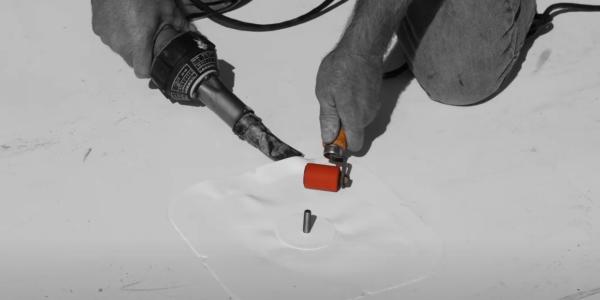What Is the Average Life of a Roof?

By FiberTite.
In today’s market, roofs can last anywhere from 10 to 30 or more years.
Editor's note: Help your building owner customers understand the stages of their roof's life by sharing this helpful article or use it as a training for team members that are brand new to roofing.
To get the most out of a roofing investment, it is important to understand the stages associated with the lifespan of the roof. Understanding the three life cycle stages will equip you with the information you need to ensure your customer is getting the most value out of their roof.
Stage 1: New Roof
Much like a car, a roofing system has a ‘new’ phase that lasts for the first two years of its life. It begins with conception of the design. This involves not only the building owner, but also the designer and consultant to decide on the right roofing system to fit the building's unique needs. Two important questions to consider are
- What is the intended use of the building?
- How long is the owner planning on staying in the same building?
These questions typically dictate the design and specifications.
Once the decision is made, total assembly occurs from the deck up. Pay close attention to the quality of materials, it’s better to pay now than pay later. Quality of workmanship is also an essential factor to consider during this stage as the contractor is still tied to workmanship for those two years. After the first two years, the responsibility falls to the owner.
Stage 2: Maintenance Period
Typically this life cycle stage lasts between 2 - 15 years and is where the bulk of the maintenance is going to occur. Ongoing maintenance is imperative to ensure a long-lasting, healthy roof. A roof requires periodic inspections, either annually or biannually, to make sure the various system components are still performing the way they need to be. If not, repairs need to happen in a time efficient manner to prevent serious damage. Typically, there are three ways in which inspections can be performed:
- By the manufacturer
- Through an extended agreement with the original contractor
- By hiring an outside inspection crew
This stage is often overlooked and many roofs fail due to an “out of sight, out of mind” mentality. Even with warranties, much of the cost associated with repairing ill-maintained roofing systems falls on the shoulders of the owner. Warranties can be voided for a number of reasons, especially if the reporting of a material breakdown is delayed for an extended period of time.
Stage 3: Re-Roofing
The average roof life today is about 15 years. However, when given the proper attention during the maintenance stage of the life cycle, a roof’s lifespan can be extended up to 30-plus years. All roofs reach the end of their life eventually. When this happens, it’s time to consider replacement options. Does the roof have to be completely replaced or will a re-cover do the job? Some factors to consider at this stage include aesthetics, performance characteristics and criteria, environmental factors and economics. The most cost efficient solution may actually be to replace the roof entirely, starting from the deck up.
By understanding the stages of a roof’s life cycle, the owner can maximize the lifespan of a roofing system as well as reduce overall costs. Even though the roof is out of sight, it should not be out of mind.
Learn more about FiberTite.
Source: FiberTite






















Comments
Leave a Reply
Have an account? Login to leave a comment!
Sign In